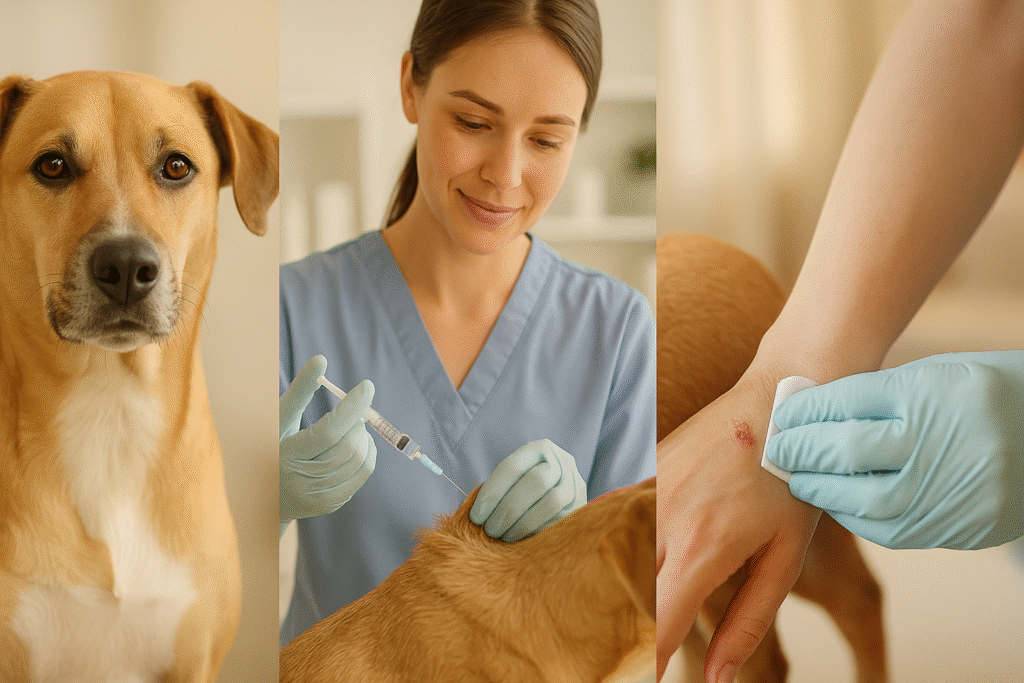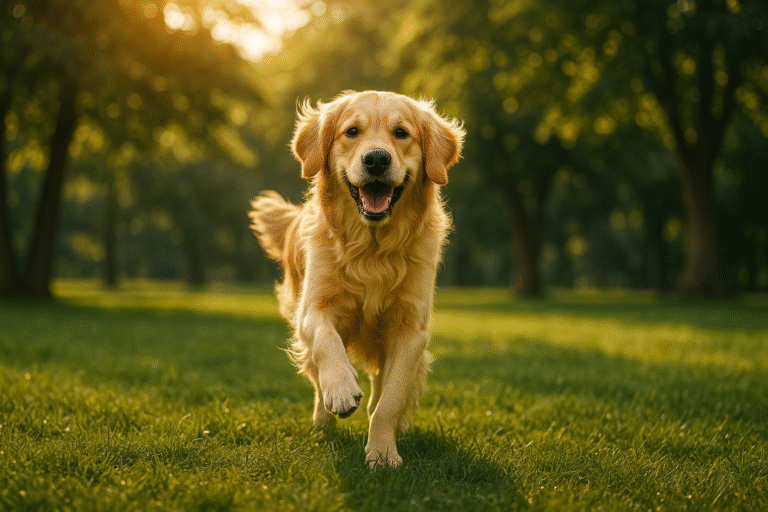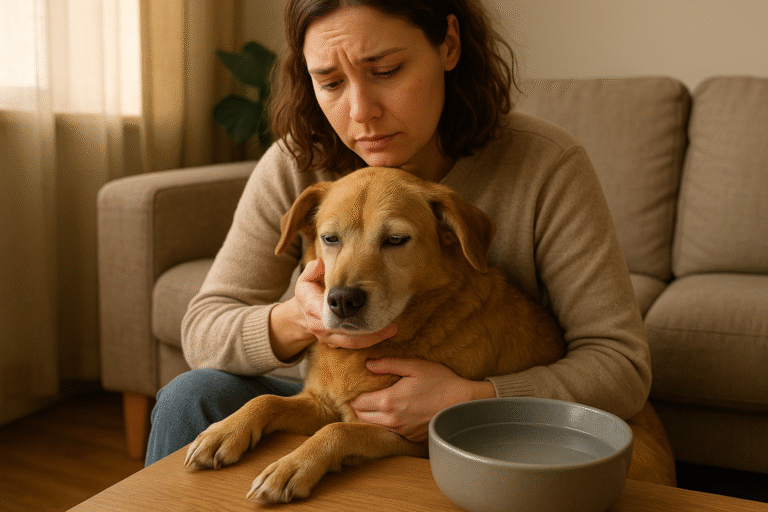
Do You Know It’s Possible to Get Rabies from a Vaccinated Dog? Unveiling Hidden Risks
Rabies is a vaccine‑preventable, zoonotic viral disease that causes nearly 100% fatal encephalitis once clinical symptoms appear. Dogs are responsible for up to 99% of human rabies cases worldwide, making canine vaccination the cornerstone of rabies control efforts. While modern rabies vaccines for dogs are highly effective and immunogenic, vaccine failures—though exceedingly rare—can occur, potentially allowing a vaccinated dog to transmit rabies under exceptional circumstances. This article explores how, why, and in what situations rabies transmission from a vaccinated dog might happen, equipping you with the facts to stay safe and ensure proper preventive measures.
Table of Contents
ToggleWhat Is Rabies?
Rabies is caused by lyssaviruses—most commonly the rabies virus—belonging to the Rhabdoviridae family. The virus targets the central nervous system, leading to fatal brain inflammation if post‑exposure prophylaxis (PEP) is not administered promptly. Transmission typically occurs through the bite or scratch of an infected animal, where virus‑laden saliva enters the wound. Early symptoms in humans include fever, headache, and general weakness, progressing rapidly to anxiety, confusion, hydrophobia (fear of water), and eventual coma.
Dogs serve as the primary reservoir for human rabies globally; in India alone, dog‑mediated rabies accounts for an estimated 20,000 deaths each year, representing over one‑third of global rabies fatalities. Thanks to widespread dog vaccination campaigns, many countries have eliminated dog‑mediated rabies, but sporadic cases persist wherever vaccination coverage or vaccine quality is suboptimal.
How Does the Rabies Vaccine Work in Dogs?
Rabies vaccines for dogs contain either inactivated virus particles or recombinant proteins that stimulate the dog’s immune system to produce neutralizing antibodies. Following vaccination:
Antibody Production: Within 7–14 days, vaccinated dogs develop virus‑neutralizing antibodies that prevent infection if exposed to the virus.
Immunologic Memory: Even if antibody levels wane over time, immunologic memory cells can mount a rapid response upon re‑exposure, often within days.
Booster Doses: To maintain protective immunity, booster vaccinations are required—typically every 1–3 years depending on local regulations and vaccine type.
When properly handled, stored, and administered according to the manufacturer’s guidelines, these vaccines are over 99% effective at preventing rabies in dogs and, by extension, human exposure.
Understanding Vaccine Failure: Causes and Case Studies
Despite rigorous standards, vaccine failures can occur due to a variety of factors:
Potency Issues: Some vaccines manufactured outside strict regulatory environments may not meet potency requirements, leading to inadequate immune responses. For instance, between 2021 and 2024, the CDC identified 132 imported dogs vaccinated abroad with a rabies vaccine later found to be subpotent; all required revaccination upon arrival to ensure protection.
Improper Handling: Breaks in the cold chain or incorrect vaccine reconstitution can degrade vaccine efficacy. An internal review at a U.S. veterinary clinic found up to one‑third of vaccine vials still containing residual volume after use, indicating under‑dosage due to handling errors, which correlated with subsequent rabies cases in vaccinated dogs.
Incomplete Schedules: Dogs that miss scheduled booster doses or receive vaccinations too late in the incubation period may not develop sufficient immunity before exposure.
Host Factors: Individual immune system variability—due to age, concurrent illness, or immunosuppression—can result in suboptimal antibody production despite correct vaccination.
While vaccine failures represent a small fraction (historically 4–6%) of reported canine rabies cases in the United States during the early 1970s, they underscore the need for vigilance in vaccine selection and administration.

Can Vaccinated Dogs Transmit Rabies? Real‑World Examples
Yes—although rare, there are documented instances where vaccinated dogs have transmitted rabies:
Import‑Related Failures (2021–2024): Dogs vaccinated abroad with a non‑compliant product (Canvac R) were later diagnosed with rabies or required revaccination due to doubts about vaccine potency. No subsequent human cases were reported, but the potential risk was significant enough for the CDC to mandate booster shots upon entry into the United States.
Clinic‑Administered Under‑dosage: A veterinary intern’s improper technique resulted in partial dosing from single‑use vials, leading to rabies cases in dogs that were presumed immunized. This incident prompted stricter in‑clinic protocols and retraining to prevent dosage errors.
Incomplete Immunization Schedules: In regions where booster compliance is low, even dogs initially vaccinated can become susceptible over time if antibody levels wane before a booster is administered.
These examples show that while the universal recommendation is “a vaccinated dog is a safe dog,” exceptions can occur when standards slip, highlighting the importance of following proper vaccination protocols.
Factors That Contribute to Vaccine Failure
To minimize the already small risk of rabies transmission from vaccinated dogs, consider these key factors:
Vaccine Source and Licensing: Always use vaccines approved by recognized regulatory bodies (e.g., USDA, WOAH).
Cold Chain Integrity: Ensure vaccines are stored and transported between 2–8 °C without interruption.
Administration Technique: Follow manufacturer instructions precisely—correct reconstitution, full dose delivery, and proper injection site.
Booster Timing: Adhere to the recommended booster schedule (annual or triennial, depending on local guidelines).
Host Health: Avoid vaccinating severely immunocompromised animals without veterinary consultation; consider serologic titer testing if immune status is uncertain.
By controlling these variables, veterinarians and pet owners can uphold the >99% effectiveness rate of modern rabies vaccines.
Statistics and the Likelihood of Contracting Rabies from a Vaccinated Dog
Global Success: Widespread dog vaccination campaigns in Latin America and parts of Asia have driven human rabies deaths down by over 90% in the past two decades.
Failure Rate: Historical data from the 1970s indicated vaccine failures in just 4–6% of reported canine rabies cases in the U.S.
Imported Cases: From 2021–2024, only 0.2% of imported dogs required revaccination due to suspected vaccine potency issues.
Current Outlook: With advances in vaccine technology—such as recombinant vaccines—and stricter regulatory oversight, true vaccine failures have become even rarer.
In practical terms, the risk of contracting rabies from a properly vaccinated dog remains extraordinarily low, but never zero.
What to Do If Bitten by a Vaccinated Dog
Even when your dog is fully up to date on rabies shots, any bite or scratch warrants immediate action:
Wound Care: Wash the wound thoroughly with soap and water for at least 15 minutes.
Medical Evaluation: Seek prompt medical attention. Explain the dog’s vaccination status but recognize that PEP (post‑exposure prophylaxis) may still be recommended based on exposure severity.
Veterinary Follow‑Up: Ensure the dog’s vaccination certificate is current and confirm with your veterinarian that no lapses have occurred.
Monitoring: Observe the dog for 10 days; if the dog remains healthy, rabies transmission is exceedingly unlikely, and PEP can sometimes be discontinued under medical guidance.
Timely wound management and medical consultation are the cornerstones of preventing human rabies, regardless of the dog’s vaccination history.
Prevention Strategies for Pet Owners
To safeguard against all possibilities of rabies transmission:
Vaccinate on Schedule: Adhere strictly to your veterinarian’s recommended rabies vaccination and booster timetable.
Maintain Records: Keep an up‑to‑date copy of your dog’s vaccine certificate; verify vaccine brand and lot number.
Choose Licensed Vaccines: Confirm that the vaccine used is licensed in your country or region and complies with international potency standards.
Educate Family Members: Teach children and guests to avoid unfamiliar or aggressive animals and to report any bites immediately.
Community Efforts: Support local and municipal stray dog vaccination programs to reduce the overall rabies reservoir in your area.
By combining personal diligence with community‑wide vaccination initiatives, the already minimal risk can be driven toward zero.
Conclusion
While the notion of contracting rabies from a vaccinated dog may seem alarming, real‑world evidence shows that such events are extremely rare and almost always tied to lapses in vaccine quality, handling, or administration. Modern rabies vaccines offer robust protection when used correctly, making dog vaccinations one of the most effective public health measures against this fatal disease. Stay informed, keep vaccinations current, and follow recommended wound‑care protocols—so you can enjoy the companionship of your dog with peace of mind.
Frequently Asked Questions (FAQs)
1. Can vaccinated dogs still transmit rabies?
While modern rabies vaccines are over 99% effective, rare cases of vaccine failure—due to issues like improper storage, handling, or host factors—can allow a vaccinated dog to transmit rabies in exceptional circumstances
2. What causes rabies vaccine failure in dogs?
Vaccine failure can stem from subpotent vaccine lots, breaks in the cold chain, incorrect reconstitution or dosing, missed booster shots, or an individual dog’s weakened immune response.
3. How common is rabies transmission from a vaccinated dog?
True rabies transmission from a vaccinated dog is exceedingly rare. Historical data suggests failures in only 4–6% of canine rabies cases in the 1970s U.S., and even lower rates today thanks to improved vaccine quality and protocols.
4. How can I verify my dog’s rabies vaccine was effective?
Ensure vaccinations use licensed, high‑potency vaccines; follow the recommended booster schedule; maintain up‑to‑date veterinary records; and, if in doubt, request a virus-neutralizing antibody titer test from your vet.
5. What should I do if a vaccinated dog bites me?
Immediately wash the wound thoroughly with soap and water for at least 15 minutes, seek medical evaluation (noting the dog’s vaccination status), and follow your doctor’s recommendation regarding post‑exposure prophylaxis (PEP).
6. Are rabies vaccines for dogs safe?
Yes—licensed rabies vaccines undergo rigorous safety and potency testing. Adverse reactions are extremely uncommon and typically mild (e.g., temporary soreness at the injection site).
7. How often do dogs need rabies booster shots?
Booster frequency depends on local regulations and vaccine type, ranging from annually to once every three years. Always follow your veterinarian’s schedule and legal requirements in your area.
8. Can improper vaccine handling lead to rabies infection?
Absolutely—if vaccines are exposed to temperatures outside the 2–8 °C range or improperly reconstituted, their potency can degrade, increasing the risk of vaccine failure and potential rabies transmission.
9. What are the early signs of rabies in a vaccinated dog?
Signs mirror those in unvaccinated dogs and may include behavioral changes (e.g., unexplained aggression or anxiety), excessive salivation, difficulty swallowing, and paralysis; any suspect behavior warrants immediate veterinary assessment.
10. How can I best protect my family from rabies?
Keep your dog’s vaccinations current, choose licensed vaccines, store and administer them correctly, teach children to avoid unfamiliar animals, and support community‑wide dog vaccination programs.
Recent Posts









Related Topics
Copyright © 2025 The Pet Blog – Expert Tips, Care Guides & Fun Facts for Every Pet Lover.

